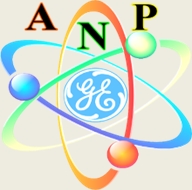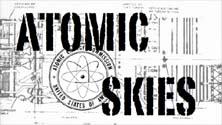Giving Wings
to the Atom
Aircraft Nuclear
Propulsion
NEPA and GE 1946-1961
Unofficial Archives

ABOUT THE PROGRAM
About Videos Documents Reunions
 Hello
and Welcome!
Hello
and Welcome!
This is about the United States nuclear jet engine and nuclear-powered aircraft
program.
 In the 1950s, two nuclear development programs were underway: one to
design the airframe for a nuclear-powered engine and the other to develop the
engine, better known as Aircraft Nuclear Propulsion (ANP). The Consolidated
Vultee Aircraft Company (Convair) conducted the airframe research and
development program. Pratt & Whitney and the General Electric Company
researched the propulsion program.
In the 1950s, two nuclear development programs were underway: one to
design the airframe for a nuclear-powered engine and the other to develop the
engine, better known as Aircraft Nuclear Propulsion (ANP). The Consolidated
Vultee Aircraft Company (Convair) conducted the airframe research and
development program. Pratt & Whitney and the General Electric Company
researched the propulsion program.
Presentation to the
Mound Museum of Science and Energy
February 28, 2024
Archives for this project are enormous and scattered among various classified and unclassified documents within government agencies, contractors, the Mound Science and Engineering Museum, and the engineering library at the University of Cincinnati. This website is a depository for a small collection of unclassified program documents, public articles, and information that describes the $2 Billion (1950s) ANP program. This website is a tribute to the 13,000 Americans who were employed by the program.
For Further Study:
Mound Science and
Energy Museum
1075 Mound Road, Miamisburg, OH 45342
(937)
353-4457
View their
YouTube Channel for past presentations.
The Mound Science and Energy Museum collects, preserves, and makes publicly
accessible the remaining heritage of the Mound Laboratory, its workers, and its
site.

Those Magnificent Men and Their Atomic Machines Blog
This fascinating blog by Mark details our extensive history of using nuclear power.
Acronyms
General Electric Company (GE)
Aircraft Nuclear Propulsion (ANP)
Nuclear Energy for Propulsion of Aircraft (NEPA)
POPSEE
Aircraft Nuclear Propulsion Office (ANPO)
Nuclear Materials and Propulsion Operation (NMPO)
Space Power Propulsion Systems (SPPS)
Nuclear Systems Enhanced Performance (NSP)
Energy Systems Program (ESP)
Advanced Energy Program (AEP)
National Reactor Test Site (NRTS)
Replaced by Idaho National Engineering Laboratory (INEL)
Replaced by Idaho National Engineering and Environmental Laboratory (INEEL)
Replaced by Idaho National Laboratory
Idaho National
Laboratory (INL)
|
Former ANP employee George Pomeroy provided declassified
archives
All documents on this website
have been officially released in writing
|
